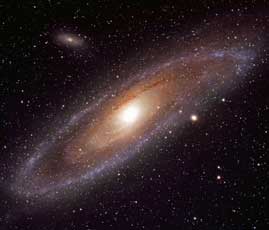
In 1995 astronomers made the first discovery of a planet orbiting a sun-like star outside of the Solar System. Since this time about 350 extra-solar planets have been discovered, with many more expected in the near future. Many of these planetary systems are very different from our own Solar System, and it remains something of a mystery how these planets have formed and evolved.
In his inaugural lecture, entitled: ‘Planetary Systems in the Galaxy: Architecture, Formation and Evolution’ Professor Nelson will describe how astronomers are finding these planets, and on-going theoretical work which attempts to explain how they formed and evolved into the systems we observe today.
Professor Nelson commented: “Ever since ancient times, philosophers and poets have speculated about the existence of other Earth-like planets outside the Solar System, and whether or not life exists elsewhere in the Universe. Astronomers today are living through incredibly exciting times as new planets are being discovered on an almost weekly basis, and we are tantalising close to finding out how common Earth-like planets actually are. In my lecture I hope to convey a sense of the excitement that these discoveries bring, and to explain some of the theoretical work being done to understand how these extrasolar planetary systems form and evolve.”
Richard Nelson received a BSc (Hons) in Astrophysics from the Physics Department at Queen Mary, University of London in 1989, and went on to study for his PhD in the Astronomy Unit, part of the School of Mathematical Sciences, between 1990 and 1994.
He held a National Academy of Sciences NRC fellowship at NASA's Jet Propulsion Laboratory for four years, studying the evolution of molecular clouds, star formation and planet formation, before returning to Queen Mary as a postdoctoral researcher in 1997.
He was appointed to a lectureship in Astronomy and Mathematics in 2000, and in 2005 an asteroid was named in his honour by the International Astronomical Union in recognition for his work in planet formation theory.
